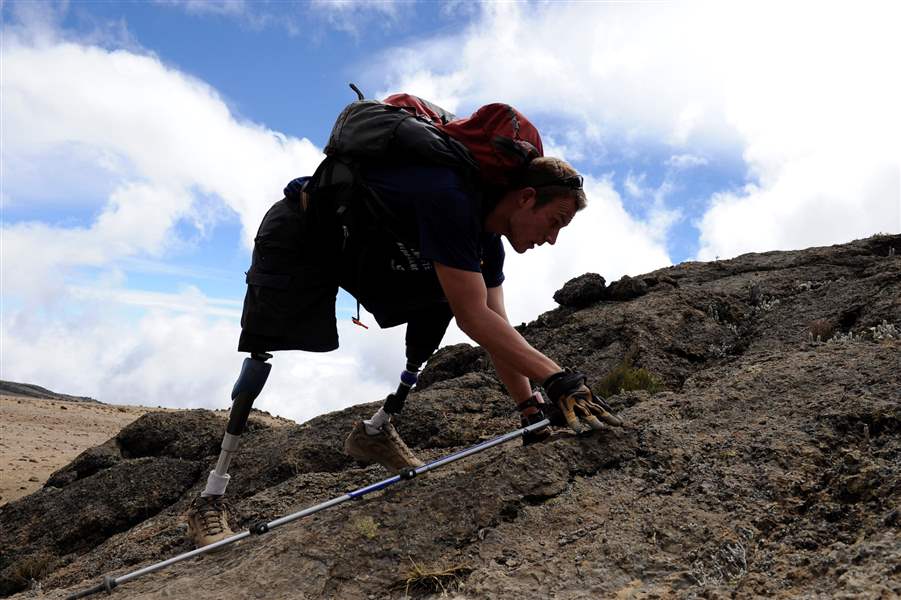
3 U.S. amputee war vets reach Kilimanjaro's top
8/11/2010
Neil Duncan slowly works his way toward Kilimanjaro's summit on the fourth day of the climb.
Reed Hoffman / AP
NAIROBI, Kenya - The three U.S. veterans from three wars had only one good leg among them. That didn't stop them from summiting Africa's highest mountain.
The soldiers - veterans of Afghanistan, Iraq, and Vietnam - scrambled, clawed, and plodded to the top of Tanzania's Mount Kilimanjaro, climbing the domed mountain's paths on one human leg and five prosthetics made of titanium and carbon fiber.
They skidded. They fell. They removed their legs to adjust their shoes. Six days later, they stood at 19,340 feet, Africa's highest point.
"The message we're trying to send back to the USA is no matter what disability you have, you can be active," said Kirk Bauer, 62, of Disabled Sports USA, a Vietnam vet who lost his leg in 1969. Mr. Bauer of Ellicott City, Md., was one of the climbers.

Neil Duncan slowly works his way toward Kilimanjaro's summit on the fourth day of the climb.
"If three amputees from three different wars and two different generations with literally one good leg can climb Kilimanjaro, our other disabled friends can get out and go hiking or go biking or swim a mile, [and] can get out and lead a healthy life," he said.
The trio's youngest, Neil Duncan, 26, of Denver, lost both legs to a road bomb in Afghanistan in 2005. He tried to climb Kilimanjaro last year, but poor planning and a fast ascent schedule doomed the trip.
This time, a different guide planned a route specifically for the vets. Saturday morning, they reached the top. "It was evidence that with the right planning and right preparation and right execution, anything can be done," Mr. Duncan said. "That was why I was so set on coming back. I knew it was attainable. It was proof that you can bounce back from a failure in anything. You can regroup, recuperate, replan, and use your previous experience and be successful."
The third vet, Dan Nevins, 37, of Jacksonville, who lost his legs in Iraq, developed a pressure boil on one of his stumps, which may have caused his development of a fever, coughing, and congestion. After reaching the summit and descending to 15,000 feet, he was evacuated on a stretcher.
"It's an incredible amount of work, as you can imagine, but one of the most difficult portions of the whole deal was the ascent from 15,500 to 19,000," Mr. Duncan said. The rocks were "real loose, real steep. With having no feet or ankles, I was lacking the ability to grip into that dirt."
Going down - the part many climbers say is the hardest - was no easier for the amputees. Mr. Duncan lost his footing and somersaulted; Mr. Bauer's artificial leg fell off.